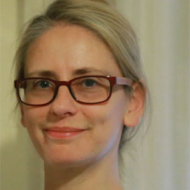Emily Dickinson and the Cultural Conversation of Alternative Faiths
This paper examines Emily Dickinson’s growing ambivalence towards the afterlife in the light of her exposure to faiths and philosophies (Hinduism, Buddhism, Confucianism and Islam) that emerged from obscurity in nineteenth-century America. Existing Dickinson scholarship credits the Congregational faith as the source of the poet’s pre-occupations with life, death and the afterlife. While it is true that Dickinson’s New England religious upbringing does not escape absorption into her writing and she never fully abandons her Congregational faith, when it comes to matters concerning life “in any other world” she concludes “My faith cannot reply” (Fr1587). Unable to cope with the death of family and friends, Dickinson re-imagined the afterlife in ways that sometimes countered, sometimes confirmed her faith. This faith and Dickinson’s notions of life, death and the afterlife were repeatedly tested through direct engagement with her social, literary, and intellectual culture. The periodicals and newspapers, to which the family subscribed – in particular The Atlantic Monthly and The Springfield Daily Republican – published essays, narratives and excerpts about Hinduism, Buddhism, Confucianism and Islam. Friends and literary influences (Samuel Bowles, R.W. Emerson and T.W. Higginson) she interacted or corresponded with regularly, partook in the growing cultural conversation of alternative faiths. Dickinson’s engagement with her culture would have undoubtedly introduced her to alternative world views or philosophies, which tested, but also compelled her to subsequently re-test her existing thoughts on life, death and the afterlife.
Audio
Date Recorded: 14 Oct 2016Duration: 59:02 and 22:53
Audio Player
Q & A with Helen Koukoutsis
Audio Player

